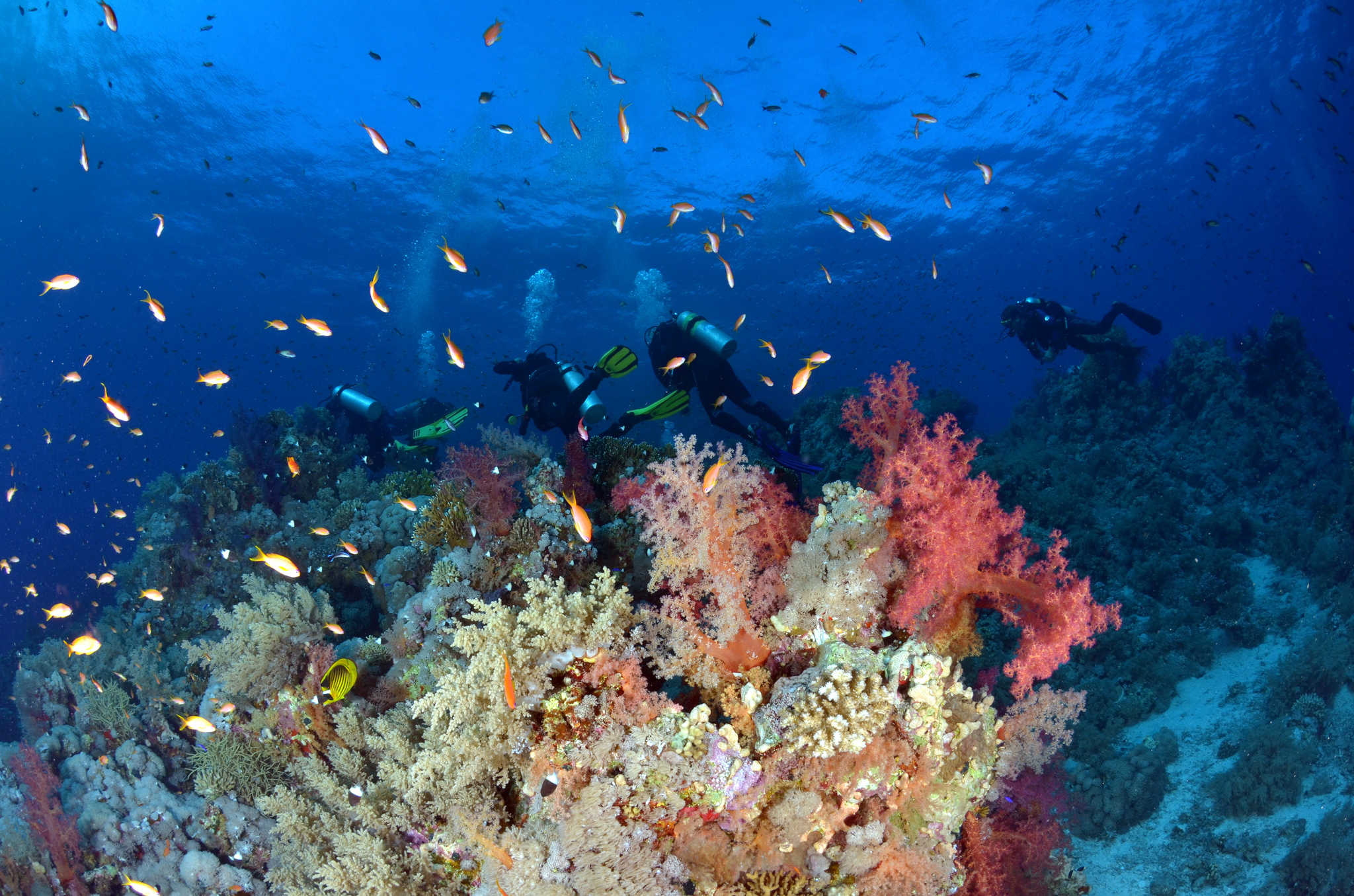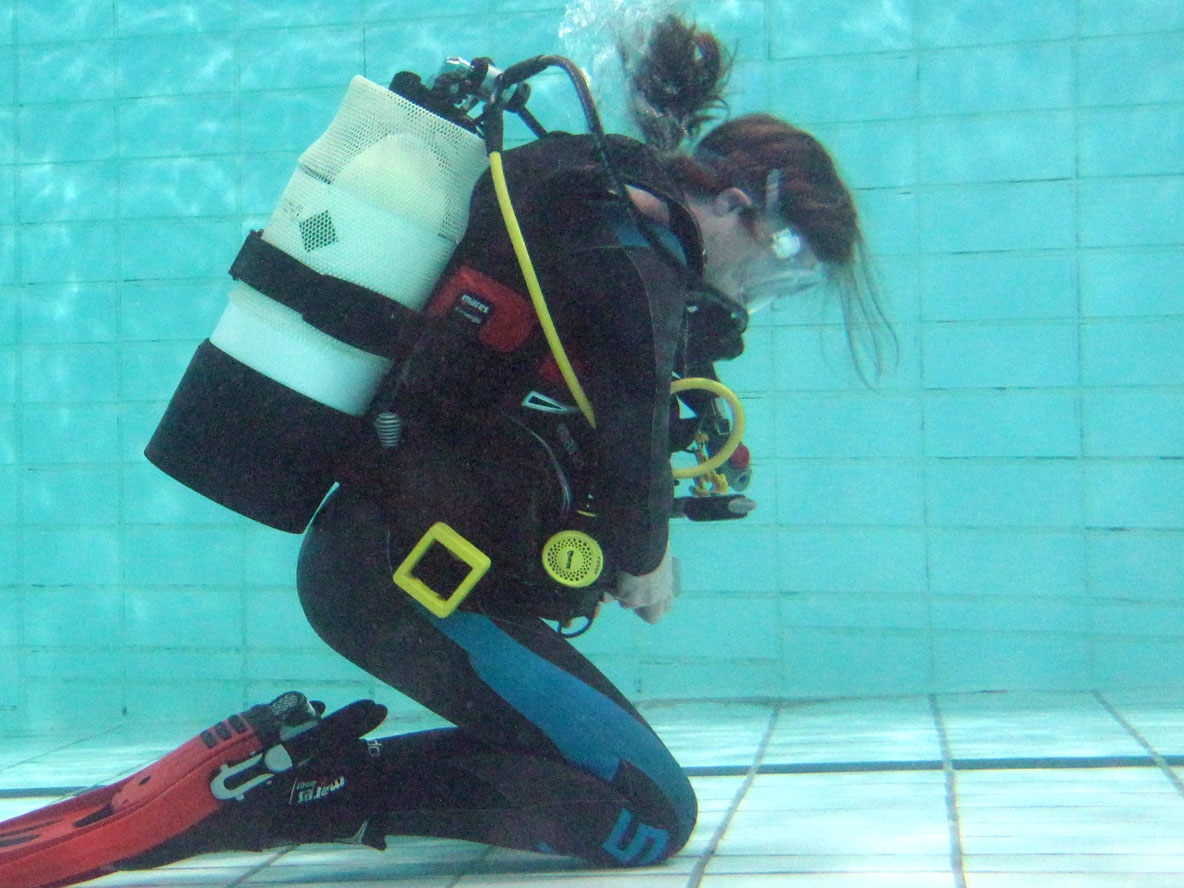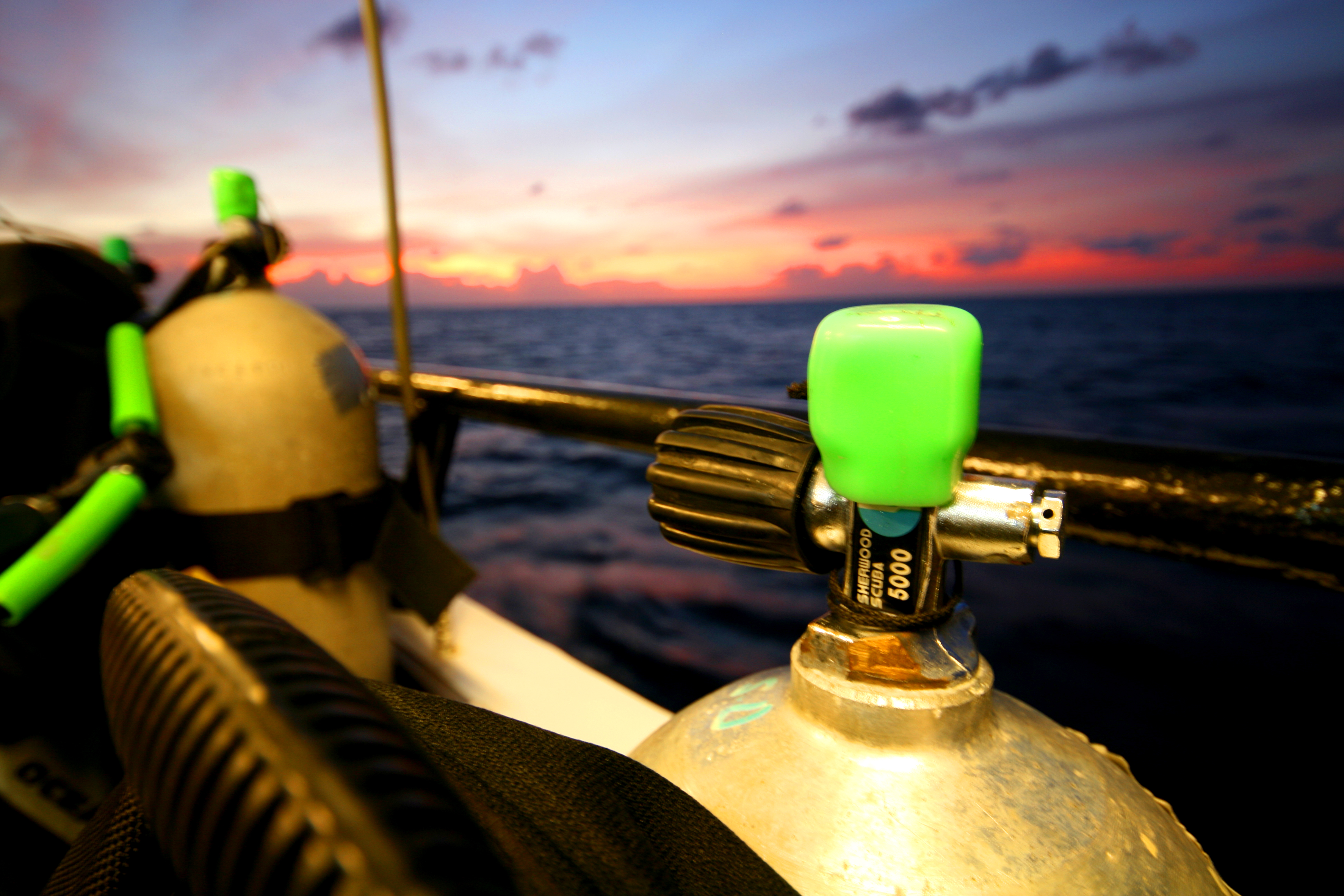Here's How to Get StartedThere’s a world under the sea, and it’s brilliant. Most of us experience this amazing setting through documentaries. We sit down and watch as brightly colored fish pop out in the cool blue depths, wishing we were really there, but not really knowing what it takes (as you'll see, not much). With a sliver of movement along the sea floor we catch sight of a fish that was so well camouflaged we did not see it until it decided to be seen. Coral gardens burst with color and little fish use the living nooks and crannies to hide from the bigger fish. A Potato Cod, a gentle man sized fish, follows us around like a curious puppy. I will admit my dive buddy and I went to see one of these documentaries in IMAX 3D and there were times where we reached down to check our gauges. Still, it does not measure up to the real thing. The movies may be awe-inspiring, but you’re not actually there. You are outside looking in. By becoming a diver, you can experience all of this and so much more.

An Educational VacationIf you do not live in a location that offers year round warm water diving, you should consider combining your dive training with a vacation. Your first dives will be more memorable and in many cases much easier to learn in tropical waters. Would you like that first dive to be in a murky quarry where you might be able to see 10 feet? Or on a beautiful coral reef surrounded by tropical fish and 100 foot visibility? Many American divers have gone to the Caribbean islands to learn how to dive. The Caribbean has great diving spots, but it is also a tourist destination that at times becomes very crowded.
There are new options. In the past few years Central America has become an attractive diving destination. Tourism may be increasing in the region, but it’s still not at the level of tourism in the Caribbean. It provides a good balance, developed enough for you to be comfortable, private enough so you are not lost in the crowd.
Costa Rica and Belize specifically are becoming the destinations of choice for both beginning and experienced divers. Belize is home to the second largest barrier reef in the world, the Belize Barrier Reef. It has great coral covering and an abundance of marine life. Not only are there vibrant little fish flashing around, the bigger fish and mammals that live in deeper water will come visit the lagoons of barrier reefs to feed before returning to their homes in the deep. Also, the wide expansion of the reefs helps calm the waters. You will not get as many waves and strong currents as in the open ocean, which helps create the ideal diving conditions you’ll find at the Belize Barrier Reef. All this makes for a fantastic setting to learn how to dive.

The Road to CertificationIf you do not have any close friends who are scuba divers, getting started can be a daunting task. The first point of confusion is the alphabet soup of accreditation agencies. There are hundreds of accreditation agencies in the world, and in the U.S. there are at least a half a dozen. Two agencies, the Professional Association of Diving Instructors –PADI – and Scuba Schools International – SSI – are the largest with the majority of accreditation between them. Accreditation certificates, called C-cards, are accepted worldwide from both agencies. Between the two, select the one that is the most convenient for you. It will most likely be PADI, as they have more instructors and dive centers. Both of these agencies train to the same standards, and while the course names might not be exactly the same, the results are.
The next area of confusion is what course to take. The obvious answer is scuba diver; however, it might not be your best choice. The scuba diver certification is a limited certification as the diver can only dive with a dive professional. The most common entry-level training is Open Water Diver (abbreviated as OWD). This is a full certification. When completed you can dive to 40-60 feet with another diver. Being able to dive with any certified diver gives you many more options and is less costly in the long run.
As you browse the Internet looking at great places to dive in
Belize or
Costa Rica, there is one more thing to consider before narrowing your choices. Diver training is separated into three portions: the knowledge module with an exam, five confined water exercises, and four open water dives. All three components must be completed but there is some flexibility on how it is done. Using PADI as an example, you have three different options you can explore, which I’ll profile below. You can arrange to take your entire open water training at the resort, you can set up what is called a referral, or do e-learning.
Becoming an Open Water DiverDoing the entire OWD course at the resort is the “old-fashion” way, but one that is still very common. The knowledge module is done in a relaxed classroom environment, using videos and instructor presentations. For each lesson there is a corresponding confined water exercise that is completed in a pool. Many dives resorts will hold the session in calm and shallow open water if they do not have a pool available. It is in these confined water dives where you put the information you learned in the knowledge portion to practical use.
Each session builds upon the one before it until each task becomes second nature. In the first lesson, you have tasks on the surface and in shallow water. You will learn how to assemble your equipment, operate the buoyancy control device (BCD), recover and clear a regulator, clear a partially flooded mask and use an alternate air supply. Students usually find assembling the equipment the hardest task to complete, but by the time you have done it three or four times it becomes automatic. It will quickly become a skill that’s as easy as driving a car.
Once you move onto open water dives you’ll find that they are mostly an extension of the confined water dives. You are just honing the basic skills you learned in the confined water. There are only a few new tasks that you will learn that could not be done in a pool. Navigation is one of those tasks. The other is a controlled emergency assent. A typical open water dive will include the skills practice and then some diving with your buddy under the instructor's supervision. The hardest part of the open water dives? Getting out of the water. You will be like a kid avoiding bedtime, begging for just a few more minutes of time. I still have trouble dragging myself away.

Open Water Diver ReferralOne of the methods that you can use to become certified is the referral method, and it is one that I highly recommend. The instructions are the same, you are just separating it between two different instructors and locations. You find a local instructor to do the knowledge development and the confined water training, then you head to the great resort you found in Belize or other tropical location and complete your open water dives.
There are a number of benefits to doing it this way. First, you are establishing contacts with a local dive center. This will become useful when you wish to buy some dive gear or have some questions. Most local dive centers have some sort of club or outings where you can meet other divers. Many of these clubs will have local dives and even international dive trips. Secondly, by doing your first two portions before the vacation it can be done on a relaxed time schedule. Spread out the lessons over a few weeks perhaps. When you get to the resort to complete your certification, you can finish it off in just two days. This frees you up to dive the rest of the trip as a certified diver.
Start Immediately with E-LearningThe E-learning method works with both of the other two methods. Instead of taking your knowledge instructions from the instructor in a classroom situation, you take your lessons at home on a computer or tablet. The results of your test are sent to the instructor you registered with, and they will review the test with you before starting the confined water sessions.

Advance Open Water DiverYou might think we are jumping ahead, but we are not. Once you have gotten a few dives in after your certification, you will be thinking what more can I do? The Advance Open Water Diver (AOWD) course is additional training beyond your OWD training and opens up new areas of diving to you. An AOWD can dive to 100 feet instead of the 60 feet for OWD. This program is made up of five adventure dives. These dives are the first dives of the corresponding specialty course. The core topics that all divers must take are navigation and deep diving. The other three are topics you choose from 15 different options. Night Diving is a very popular one and brings a completely different side of scuba diving to life. The AOWD course is open to any certified OWD.
Scuba Diving as a Life MilestoneBecoming a diver is a milestone you'll treasure starting from that very first dive. It was the soulful serenity guiding me upwards as I slowly rose to the surface for the first time, not my fins. You’ll find that floating in the water amongst the fish and other sea creatures will help reduce stress. Stress reduction experts often advise people in high-pressure jobs to get a fish tank. If a few cubic meters of water can do that, just imagine what a coral reef will do for you. A shallow dive on a tropical reef may give you an hour of dive time, an hour of pleasure. It will be exciting and relaxing at the same time. If you take your first open water dive in a location like Belize or Costa Rica you are already diving at some of the best dive sites in the world. You are also doing something that many people say they hope to do. For you that day has come. You will see that those ocean documentaries don’t compare to seeing it for yourself.

Cover Photo
Source






